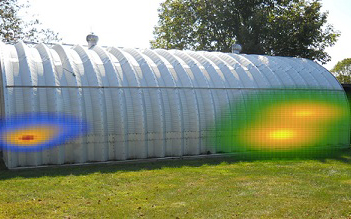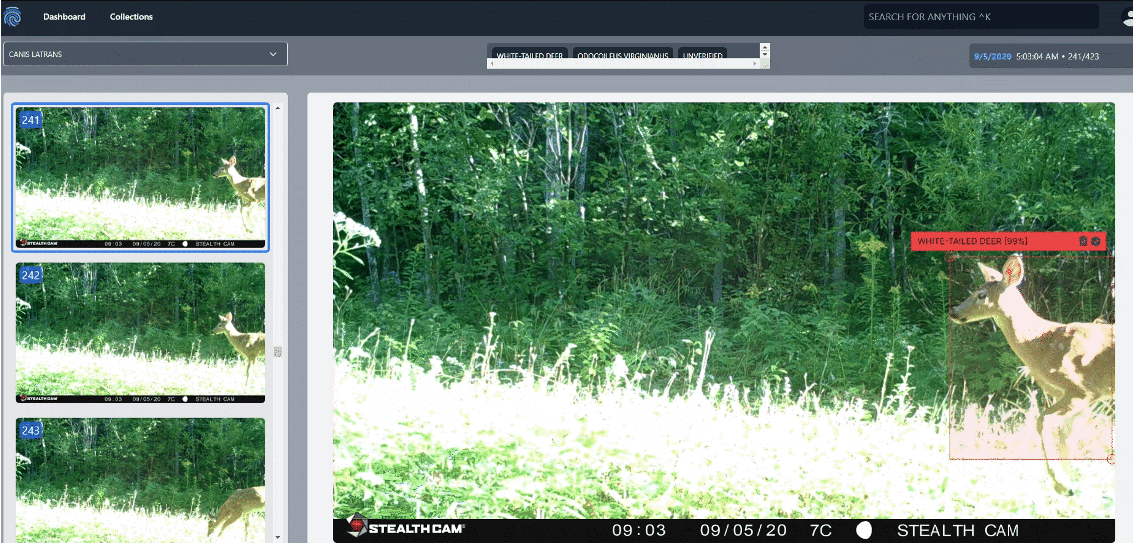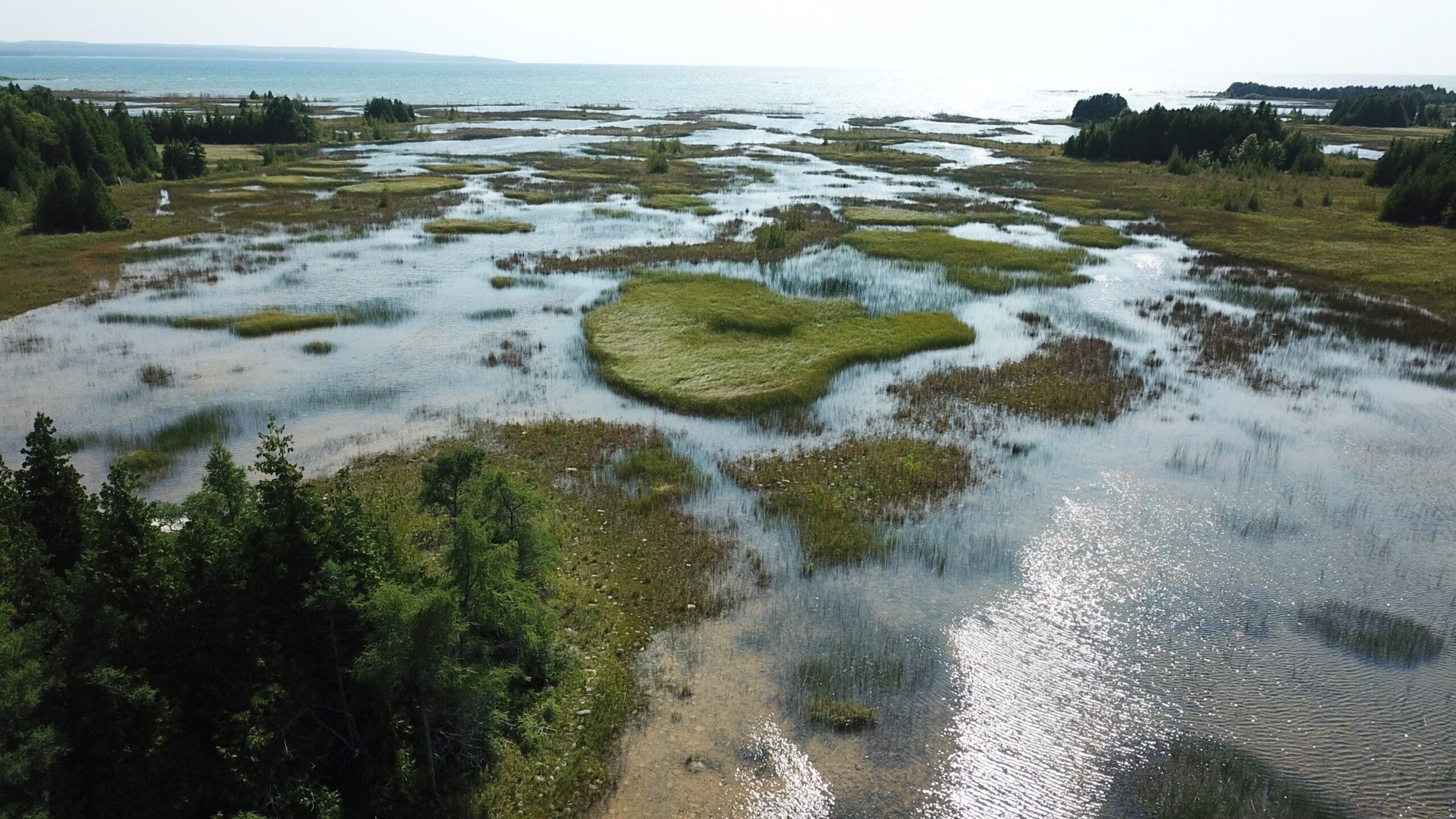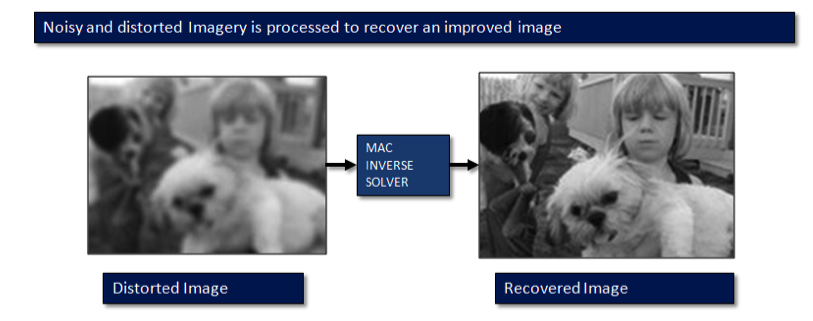Expertise: Machine Learning and Data Analytics
At Michigan Aerospace Corporation, we know how to extract practical information from large volumes of data to improve decision making. We employ advanced machine learning, pattern recognition, and optimization techniques to detect patterns, classify features, and predict the future. We also specialize in techniques for solving inverse problems that allow us to see through noise and distortion in order to identify and measure the hidden dynamics of complex systems.
From upper atmospheric measurements to environmental monitoring, we can provide you with the tools to collect, analyze, and make useful decisions from your data.
RECONN.ai is a holistic platform that utilizes machine learning to find and classify various wildlife in camera trap images. Will allow users to upload, store, annotate, filter, organize and ultimately export results
Traditional methods of data collection in the field to monitor trends or conservation efforts are often limited by time and availability of people. The use of camera traps for data collection is a fast growing and increasingly affordable tool. While the use of camera traps has clear advantages over legacy survey means, they can generate an incredible number of images that need review, annotation and classification.
Michigan Aerospace is developing an automated machine learning platform that can both detect and classify the wildlife contained within researchers' camera trap imagery. By leveraging efficient machine learning and smart database management, time spent manually reviewing trail camera photos on each project can be dramatically reduced from months to hours.
For a free beta trial, please visit RECONN.ai.
RECONN.ai provides unique features and performances
- Open-source object identification ML in conjunction with custom wildlife classification ML to optimize accuracy efficiency
- Random forest classification algorithm to improve accuracy, training efficiency, and scaling
- Holistic platform to enable easy upload, annotate, tag, filter, and data export with improved UI/UX
- Upload thousands of photos quickly and easily
- Powerful detection to make removal of empty images easy, allowing you to focus on what matters
- Shortcut keys and simplified ease of use mechanics make annotating photos a breeze
- Tagging feature allows you to record unlimited notes on an image for future search and use
- Exporting provides you with a summation of your photos and annotation efforts and allows for easy assimilation for post processing
- Deep storage allows you to store millions of your photos on the same platform for future us
- Project and organizations sharing allows for collaboration amongst users
- Private platform where only you and your selected collaborators have access to your photos and data
Collaboration Opportunities & Needs
- Collaborating with wildlife experts and researchers on identifying additional species of interest
- Partnering with wildlife organizations to conduct piloted programs
- To collaborate, please email info@reconn.ai
ARGOS.ai is a holistic automated platform that utilizes machine learning and drones to monitor and assess invasive plant species. A scientifically credible and affordable method for rapidly and precisely monitoring invasive plant species within rare and Great Lakes endemic coastal ecosystems.
In 2018 the Coastal Zone Management Program, Office of the Great Lakes, Michigan Department of Natural Resources, and the National Oceanic and Atmospheric Administration funded “Development of an automated monitoring platform for invasive in coastal ecosystems”. This project facilitated the application of technological advances to some of the highest priority stewardship sites in Michigan’s coastal zone. In addition, it fostered the unique partnership between Michigan Natural Features Inventory (MNFI) and Michigan Aerospace Corporation (MAC), bringing together scientists with expertise in ecology, biodiversity conservation, computer programming, remote sensing, and deep learning. Through work on this project, MNFI and MAC developed Automated RecoGnition Of Species (ARGOS), a novel but scientifically credible and affordable method for rapidly and precisely monitoring invasive plant species within rare and Great Lakes endemic coastal ecosystems.
Our ARGOS platform comprises:
Once trained, the neural networks produce detailed, georeferenced probability maps of invasive species locations that ecologists can use to plan treatments and monitor effectiveness of interventions. Trained ARGOS.ai can rapidly process hundreds of acres of imagery to produce georeferenced species location maps. These maps can be produced for any species of interest, and are an actionable data product that practicing ecologists can use to evaluate risk, plan treatments, and monitor the effectiveness of interventions.
ARGOS Results and Impact
Collaboration Opportunities & Needs
- Collaborating with ecologists on identifying additional invasive species of interest
- Partnering with Natural Resources and Land Management organizations to conduct piloted programs
- To collaborate please email info@michiganaerospace.com
See through the noise and get control of your useful information.

Usually scientists, engineers and analysts have models that predict the behavior of a complex system when the state of the system is known. This is called a forward problem. Forward problems are useful for designing systems and simulating their performance before they are built. However, many people find themselves in the position of having data or information about a system – but what they really need is to recover its state, understand its root drivers or control a complex process. Often this data is noisy, and any knowledge concerning the dynamics is heuristic or maybe entirely unknown. This scenario calls for the application of Inverse Problems techniques. Michigan Aerospace specializes in solving these kinds of problems. It has developed techniques through its research in remote sensing for atmospheric measurements and image processing and refined them with projects in identifying radar signals and detection of threats. Michigan Aerospace has begun extending these techniques into the biomedical device arena and business analysis through its Springmatter and Tinkering initiatives.
Michigan Aerospace and Springmatter can help you see through the noise and get control of your useful information.
Some examples of Michigan Aerospace’s expertise in Inverse Problems are shown in extracting a signal from two received signals that are independently and blindly distorted copies of an original. This is called Blind Equalization Source Recovery (BESR for short)
Another example is Michigan Aerospace’s inversion of atmospheric properties such as wind velocity, temperature and density from interferometric imagery.
Often information is distorted and Michigan Aerospace must unwind the distortions to recover the truth, as demonstrated in the de-blurring example below.
Michigan Aerospace works with the Department of Energy to make wind turbines smarter — to sense when trouble is imminent and actively intervene to prevent catastrophic turbine damage.

We use novel machine learning techniques to fuse information across many scales — from weather reports and geographic data, to turbine sensors and custom LIDAR systems — to build a coherent, real-time picture of turbine health.
We developed a portable imaging neutron/gamma spectrometer to safely detect radioactive threats.

Nuclear terrorism is among the most frightening threats we face today. Successful detection and interdiction of illicit radioactive materials requires an ability to address the broad range of radioactive signatures. Radiation imaging provides the capability to see the radioactive source via the radiation it produces, allowing responders to pinpoint the location of radioactive materials while remaining at a safe distance.
Spectroscopy is used to identify the radioactive source and estimate whether its threat level. Imaging spectroscopy leverages techniques from modern astrophysics to enable the imaging and identification of radioactive and fissile materials — with potential improvements in detection distance over currently deployed radiation detection systems.
The Portable Neutron/Gamma Spectroscope (NSPECT) uses multiple detection modules to measure the direction and energy of incoming gamma rays or neutrons. NSPECT is the result of a collaboration between Michigan Aerospace Corporation and the University of New Hampshire (UNH) with support from the Defense Threat Reduction Agency of the Department of Defense.





















